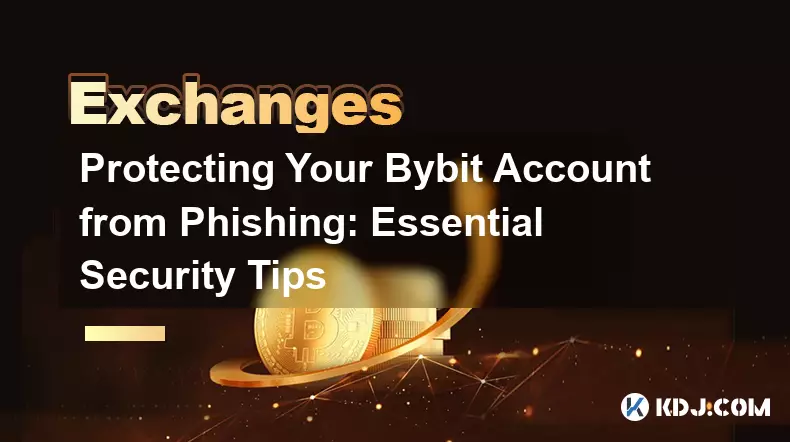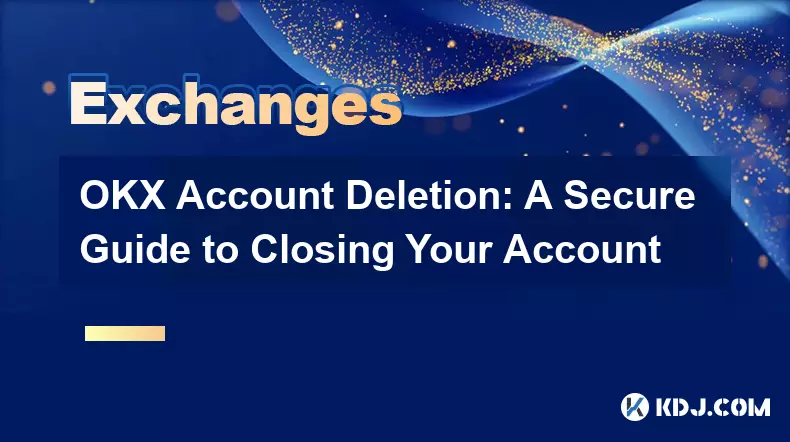-
 bitcoin
bitcoin $101752.865364 USD
-1.09% -
 ethereum
ethereum $3382.985899 USD
-1.38% -
 tether
tether $0.999658 USD
0.04% -
 xrp
xrp $2.272505 USD
-1.51% -
 bnb
bnb $989.089004 USD
0.14% -
 solana
solana $156.962612 USD
-3.08% -
 usd-coin
usd-coin $0.999776 USD
0.01% -
 tron
tron $0.290786 USD
-0.69% -
 dogecoin
dogecoin $0.174594 USD
-2.86% -
 cardano
cardano $0.560085 USD
-3.55% -
 hyperliquid
hyperliquid $40.023704 USD
-5.75% -
 chainlink
chainlink $15.324649 USD
-2.78% -
 bitcoin-cash
bitcoin-cash $493.576540 USD
-3.52% -
 zcash
zcash $571.320038 USD
-12.05% -
 stellar
stellar $0.280066 USD
-4.26%
Protecting Your Bybit Account from Phishing: Essential Security Tips
Phishing scams in crypto often use fake websites and urgent messages to steal login details—always verify URLs and enable app-based 2FA for better protection.
Nov 05, 2025 at 02:14 am

Understanding Phishing Threats in the Crypto Space
1. Phishing attacks are among the most common security threats facing cryptocurrency users, particularly those active on exchanges like Bybit. These scams typically involve fraudulent websites, emails, or messages designed to mimic legitimate platforms and trick users into revealing sensitive information such as login credentials or API keys.
2. Cybercriminals often exploit urgency or fear, sending fake alerts about account suspension or suspicious activity to pressure victims into acting quickly without verifying the source. These deceptive tactics rely heavily on psychological manipulation rather than technical breaches.
3. Fake domains that closely resemble the official Bybit URL—such as “bybit-login.com” or “secure-bybit.net”—are frequently used. These sites may appear nearly identical to the real platform, complete with logos and interface elements, making them difficult to distinguish at a glance.
4. Social engineering plays a major role in phishing success. Scammers may impersonate customer support agents via live chat, Telegram, or Discord, offering help with account issues while subtly guiding users toward entering their credentials on malicious pages.
5. Mobile app impersonations are also on the rise. Fraudulent apps mimicking Bybit’s design are sometimes uploaded to third-party stores or distributed through misleading ads, leading users to install software that logs keystrokes or captures login data.
Enable Two-Factor Authentication (2FA) for Maximum Protection
1. Activating 2FA is one of the most effective steps to secure your Bybit account. This adds an extra layer of verification beyond just a password, requiring a time-sensitive code generated by an authenticator app like Google Authenticator or Authy.
2. Avoid using SMS-based 2FA whenever possible, as SIM-swapping attacks can allow hackers to intercept text messages. App-based authentication provides stronger protection because it doesn’t rely on cellular networks vulnerable to carrier-level exploits.
3. Store recovery codes in a secure offline location during setup. These codes are essential if you lose access to your authenticator device and can prevent permanent lockout from your account.
4. Regularly review connected devices and remove any unfamiliar or outdated authenticator links. Bybit allows users to manage active 2FA sessions, helping ensure no unauthorized device retains access.
5. Never share your 2FA codes with anyone, including individuals claiming to be from Bybit support. Legitimate staff will never ask for this information under any circumstances.
Verifying Official Communication Channels
1. Always confirm the authenticity of emails by checking the sender’s address. Official Bybit communications originate from domains ending in “@bybit.com.” Any variation, such as “@bybit-support.org” or “@bybit.email,” should be treated as suspicious.
2. Hover over hyperlinks in messages before clicking to preview the actual destination URL. If the link leads to a domain outside of bybit.com or its verified subdomains, do not proceed and report the message immediately.
3. Bookmark the official Bybit website (https://www.bybit.com) directly in your browser to avoid accidental visits to counterfeit sites. Relying on search engines increases the risk of landing on SEO-optimized phishing pages.
4. Monitor Bybit’s official social media accounts and blog for announcements. Scammers often create fake promotions or urgent maintenance warnings; cross-referencing with verified sources helps identify false claims.
5. Report suspected phishing attempts through Bybit’s dedicated security portal. Providing screenshots, URLs, and email headers assists their cybersecurity team in taking down fraudulent content and protecting other users.
Securing API Keys and Third-Party Integrations
1. When generating API keys for trading bots or portfolio trackers, restrict permissions strictly to what is necessary. For example, use “read-only” access when monitoring balances and disable withdrawal rights entirely.
2. Assign descriptive names to each API key to easily identify its purpose and associated service. This simplifies audits and revocation if a third-party tool is compromised or no longer needed.
3. Regularly rotate API keys, especially after changes in your digital environment or suspected exposure. Bybit allows users to invalidate old keys instantly through the API management dashboard.
4. Never expose API secrets in public forums, GitHub repositories, or unsecured messaging apps. Even partial leaks can enable attackers to reconstruct full credentials and gain unauthorized access.
5. Use IP binding to limit API access to specific trusted addresses. This ensures that even if a key is stolen, it cannot be used from unauthorized locations, significantly reducing the attack surface.
Frequently Asked Questions
What should I do if I accidentally entered my credentials on a phishing site?Immediately change your password and revoke all active sessions through Bybit’s security settings. Re-enable 2FA if it was disabled and contact Bybit support with details of the incident for further assistance.
How can I tell if a Telegram group is officially affiliated with Bybit?Official Bybit communities are clearly labeled and linked from the company’s main website or verified social media profiles. Groups using unofficial domains, promising guaranteed returns, or requesting personal data are almost certainly fraudulent.
Are hardware wallets compatible with Bybit for added security?Bybit does not support direct integration with hardware wallets for exchange trading. However, withdrawing funds to a hardware wallet after trading is highly recommended to protect long-term holdings from online threats.
Can Bybit refund funds lost due to phishing?Unfortunately, Bybit cannot recover assets lost from compromised accounts. Since blockchain transactions are irreversible and the platform cannot distinguish between user-initiated and attacker-driven actions, prevention remains the only reliable defense.
Disclaimer:info@kdj.com
The information provided is not trading advice. kdj.com does not assume any responsibility for any investments made based on the information provided in this article. Cryptocurrencies are highly volatile and it is highly recommended that you invest with caution after thorough research!
If you believe that the content used on this website infringes your copyright, please contact us immediately (info@kdj.com) and we will delete it promptly.
- Ripple (XRP) in 2026: Hold or Fold? A Look at XRP's Future and Emerging DeFi Alternatives
- 2025-11-08 18:35:01
- Zcash ZEC Coin Price Explosion: From Privacy Niche to Center Stage
- 2025-11-08 18:55:01
- Berachain Price Prediction: Navigating the Honeycomb Hype in Crypto
- 2025-11-08 18:55:01
- Arthur Hayes, Gold, and Bitcoin: A Modern Monetary Trinity?
- 2025-11-08 19:15:01
- Shiba Inu's Next Move: Navigating a Shifting Market
- 2025-11-08 19:20:01
- Pakistan's Crypto Crossroads: Balancing Opportunity with Asset-Backed Realities
- 2025-11-08 19:20:01
Related knowledge

Common Mistakes to Avoid on OKX: A Guide for New Traders
Nov 04,2025 at 03:37pm
Understanding the Interface Before Trading1. New traders often jump into placing orders without fully exploring the OKX platform layout. Taking time t...

OKX TradingView Integration: A Guide to Advanced Chart Analysis
Nov 02,2025 at 03:37am
OKX and TradingView: Bridging the Gap for Professional Traders1. OKX, one of the leading cryptocurrency exchanges, has integrated with TradingView to ...

Finding Your OKX Deposit Address: A Quick and Safe Guide
Nov 05,2025 at 01:15pm
Finding Your OKX Deposit Address: A Step-by-Step Process1. Log into your OKX account using your registered credentials. Ensure you are accessing the o...

OKX Savings Guide: A Low-Risk Strategy for Earning Crypto
Nov 05,2025 at 06:55am
Understanding OKX Savings and Its Role in Crypto Earnings1. OKX Savings offers users a straightforward method to earn passive income by leveraging idl...

OKX Account Deletion: A Secure Guide to Closing Your Account
Nov 05,2025 at 08:44am
Understanding the Implications of Account Closure1. Closing your OKX account permanently removes access to all associated trading features, including ...

Mastering the OKX Mobile App: Tips for Trading on the Go
Nov 05,2025 at 01:19am
Streamlined Navigation for Efficient Trading1. The OKX mobile app features a clean and intuitive interface that allows traders to access key functions...

Common Mistakes to Avoid on OKX: A Guide for New Traders
Nov 04,2025 at 03:37pm
Understanding the Interface Before Trading1. New traders often jump into placing orders without fully exploring the OKX platform layout. Taking time t...

OKX TradingView Integration: A Guide to Advanced Chart Analysis
Nov 02,2025 at 03:37am
OKX and TradingView: Bridging the Gap for Professional Traders1. OKX, one of the leading cryptocurrency exchanges, has integrated with TradingView to ...

Finding Your OKX Deposit Address: A Quick and Safe Guide
Nov 05,2025 at 01:15pm
Finding Your OKX Deposit Address: A Step-by-Step Process1. Log into your OKX account using your registered credentials. Ensure you are accessing the o...

OKX Savings Guide: A Low-Risk Strategy for Earning Crypto
Nov 05,2025 at 06:55am
Understanding OKX Savings and Its Role in Crypto Earnings1. OKX Savings offers users a straightforward method to earn passive income by leveraging idl...

OKX Account Deletion: A Secure Guide to Closing Your Account
Nov 05,2025 at 08:44am
Understanding the Implications of Account Closure1. Closing your OKX account permanently removes access to all associated trading features, including ...

Mastering the OKX Mobile App: Tips for Trading on the Go
Nov 05,2025 at 01:19am
Streamlined Navigation for Efficient Trading1. The OKX mobile app features a clean and intuitive interface that allows traders to access key functions...
See all articles





















![The Graph Price Prediction [GRT Crypto Price News Today] The Graph Price Prediction [GRT Crypto Price News Today]](/uploads/2025/11/07/cryptocurrencies-news/videos/690d4df44fe69_image_500_375.webp)




















































